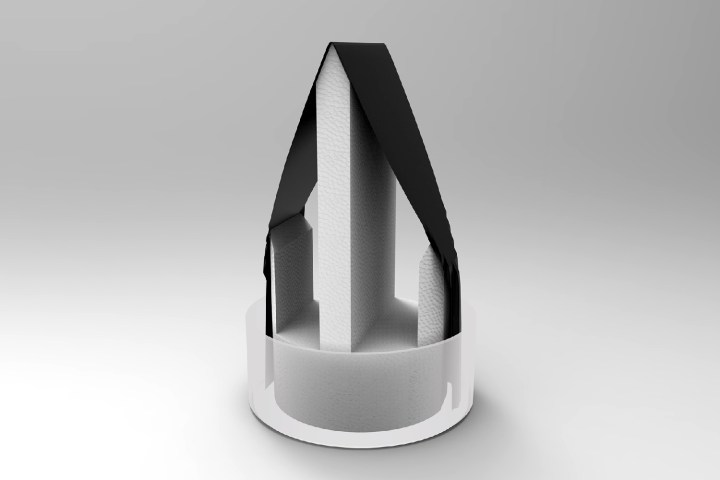
There is nothing new about the idea of using the sun’s energy to evaporate and thereby purify water. In fact, the idea was described by the Greek philosopher Aristotle more than 2,000 years ago. But researchers from the University at Buffalo School of Engineering and Applied Sciences have found a way to improve on this concept and sanitize water at what appear to be record-breaking rates. In doing so, they could help solve one of the world’s most important problems: The continued lack of access to clean water for a large number of people around the world.
Led by associate professor of electrical engineering Qiaoqiang Gan, the researchers developed a practical and low-cost device that uses black, carbon-dipped paper to create a solar still. The still works by using a strip of this carbon-dipped paper — shaped like an upside-down V — which hangs into water to soak it up. When it is heated by sunlight, it encourages evaporation, although the specific angle of the strip means that it is not hit directly by the sun’s rays. The paper’s sloped geometry thereby allows it remain below room temperature, which lets it draw in heat from its surroundings. The result is a more efficient evaporation cycle, and more water vapor gathered. With a solar still the size of a mini fridge, the researchers estimate that they can generate 10 to 20 liters of clean water every single day.
“In recent years, significant interest has developed in using sunlight for electricity-free vapor generation due to its potential to address limitations in fresh water availability around the globe,” Gan told Digital Trends. “However, when systems operate at higher temperatures, conduction, convection, and radiation losses are inevitable, and limit the overall attainable efficiency. In this new report, we developed an opposite approach, using solar energy to generate cold vapor below room temperature.”
To bring the product to market, the team has launched a startup called Sunny Clean Water. It hopes to create a sun-powered water purifier based on this new research.
“We are [currently] working with two NGOs to perform field tests in remote areas and areas affected by natural disaster: One in Puerto Rico, another one in Philippines,” Gan said. “Puerto Rico was destroyed because of [a major] storm in 2017. The NGO in [the] Philippines aims to help residents in remote villages with no access to electricity or water-purification utilities. I am on my way to Argentina to discuss their local needs.”
A paper describing the work was recently published in the journal Advanced Science.
Editors' Recommendations
- Watch this RC car skip across water in record-breaking ride
- For thirsty campers, GoSun’s water purifier purges germs with power of the sun
- Mars has auroras of its own, which could explain why the planet lost its water
- Remains of shallow, briny pools provide further evidence of liquid water on Mars
- New images reveal more about the history of water on Mars


